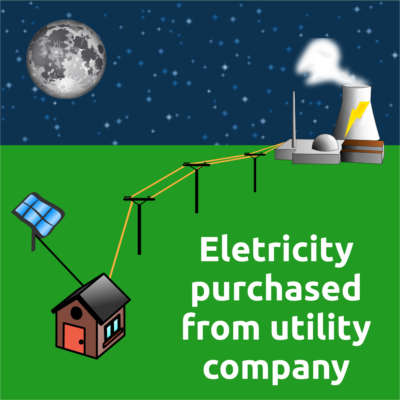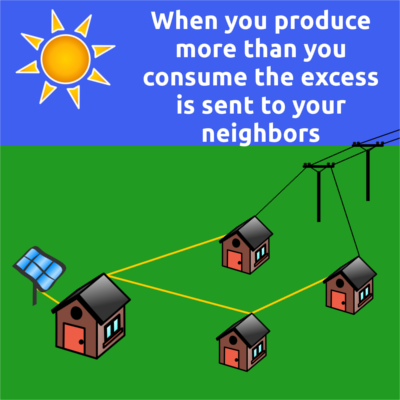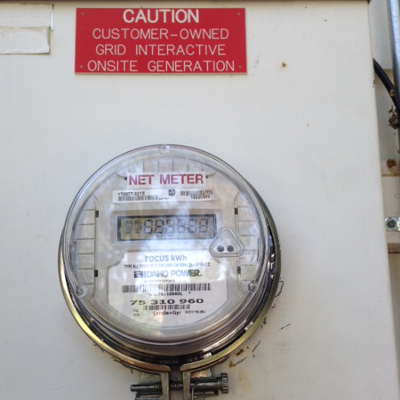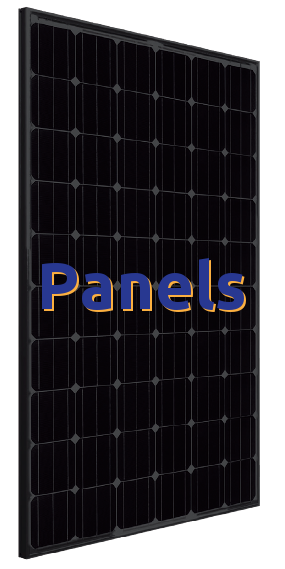What to know about a solar panel installation
Solar Panels (also called photovoltaic panels or PV panels) convert sunlight directly into electricity which can be used on site or sent to other nearby consumers if a system is connected to the grid. Selecting an appropriate type of system and site for your installation is vital to getting the most out of your investment. Understanding rates for grid connected systems and the distinction between grid connected and off grid systems is important when determining the size, location, and other aspects of an installation.
What makes a good location?

Shading and orientation of the site are important factors to consider
Site criteria
The most important criteria to consider when determining the appropriateness of a location for solar panels are:
- Orientation: Is a potential location open to the sky toward the south, west, or east?
- Shading: How much shading does a potential location receive?
- Area: How much space is available for panels?
- Current electric consumption: What portion of your current consumption are you interested in reducing?
These factors help to determine the size and orientation an array. Get started today with a call to Empowered Solar for a free site consultation. We're here to answer your questions and help you determine what type of system best suits your needs and meets your budget.
Project Stages
- Design and permitting: We take care of the permitting process and schedule your installation for a time when our activities will have minimal impact on your home or workplace.
- Installation: The durration of installation depends on project size. A standard residential install can take 1-4 days.
- Inspections and connection: Inspections are done by the city/county as well as the utility company and ensure that all work is up to code and meets requirements set out by the utility. When these are finished you can flip the switch on your system and start making electricity!
This short time lapse of a recent installation can give you an idea of what a project looks like as it comes together and the panels get placed on the roof.
Solar tax incentives
Idahoans have the opportunity to take advantage of various incentive programs aimed at encouraging the installation of solar panels. The largest of these is a federal tax credit which is available to both residential and commercial customers. The current federal solar tax credit is 30%, which means you get 30% of the cost of an installation back. Take advantage of the savings now! The State of Idaho also offers a tax deduction that can further reduce system cost.
Additionally, the State of Idaho offers a low interest loan program to help homeowners finance solar projects. The federal government also has many incentives directed toward energy efficiency upgrades that can be used to reduce consumption.
Solar panels connected to grid: rate structure
A solar panel installation connected to the grid transfers electricity to and from the utility company at various times depending on the balance between consumption and production at any given time. Batteries can be added to grid connected solar systems for financial gain and for backup power during utility outages. Some electric utilities in Idaho are transitioning from net metering to a more variable pricing structure. The specifics are different for each company, so it is important to understand your utility company's rules. It can be confusing, so give us a call with your questions, we're happy to help.
How does this work? The utility will swap the current one-way meter on your property for a bi-directional meter. The new meter keeps track of electricity you consume from the utility and electricity you produce and send back to the grid.
When you are producing electricity

When your solar panels produce electricity during the day that electricity is consumed directly in your home or business.
When you are not producing electricity

At night you purchase electricity from the utility.
The scenario on the left is a simplified version of what happens, and would be the case when you are using exactly the same amount of electricity as your solar panels are producing. Throughout the day your electricity consumption changes as you turn appliances on and off and your panels' production changes as the sun moves through the sky.
When you are gone during the day?

When your solar panels produce excess electricity during the day that electricity is sent to nearby homes or businesses. Similarly, if you produce less than you consume the excess is purchased from the utility.
Accounting for these transfers

The new meter measures the amount of electricity sent to the grid and subtracts that from the amount taken in from the grid.
When a customer sends electricity out to the grid the utility will pay the customer for that generation. Rates for power sent out to the grid vary. Depending on the time of year and time of day they may be less than or greater than the price paid to the utility for electricity taken in.
Equipment
A high quality solar installation requires a combination of components that work efficiently together. We design systems to fit the needs of each specific site and use a variety of components from industry leading companies to achieve this goal.
We pride ourselves on staying up to date with the latest developments in solar technology and are continuously working with our distribution partners to make sure we give you the highest quality components with the best value.
Principal Components

Solar panels collect sunlight and transform it into electricity which can be used directly in your home.
All black solar panels blend well with black shingles and help the array have a very uniform and clean look.

Inverters convert the direct current produced by the solar panels into alternating current which is what the appliances in our homes use.
Empowered Solar uses micro inverters with the majority of our systems as they provide added performance in the case of shading, make monitoring of each individual panel possible, and allow for easy future system expansion.

This is the support structure for the panels. Panels can be either mounted to a roof or on the ground in an open area.
Pitched roof mounting systems include a lag bolt that connects into the building's rafters and a flashing that covers this bolt and slides under the shingles upslope from penetration to prevent water from entering the roof. Attached to this is a rail and the solar panels are then attached to a section of two rails.
Flat roof options that don't penetrate membranes are available. These systems are based on ballast bays that holds cinder blocks. The panels then span multiple ballast bays.

